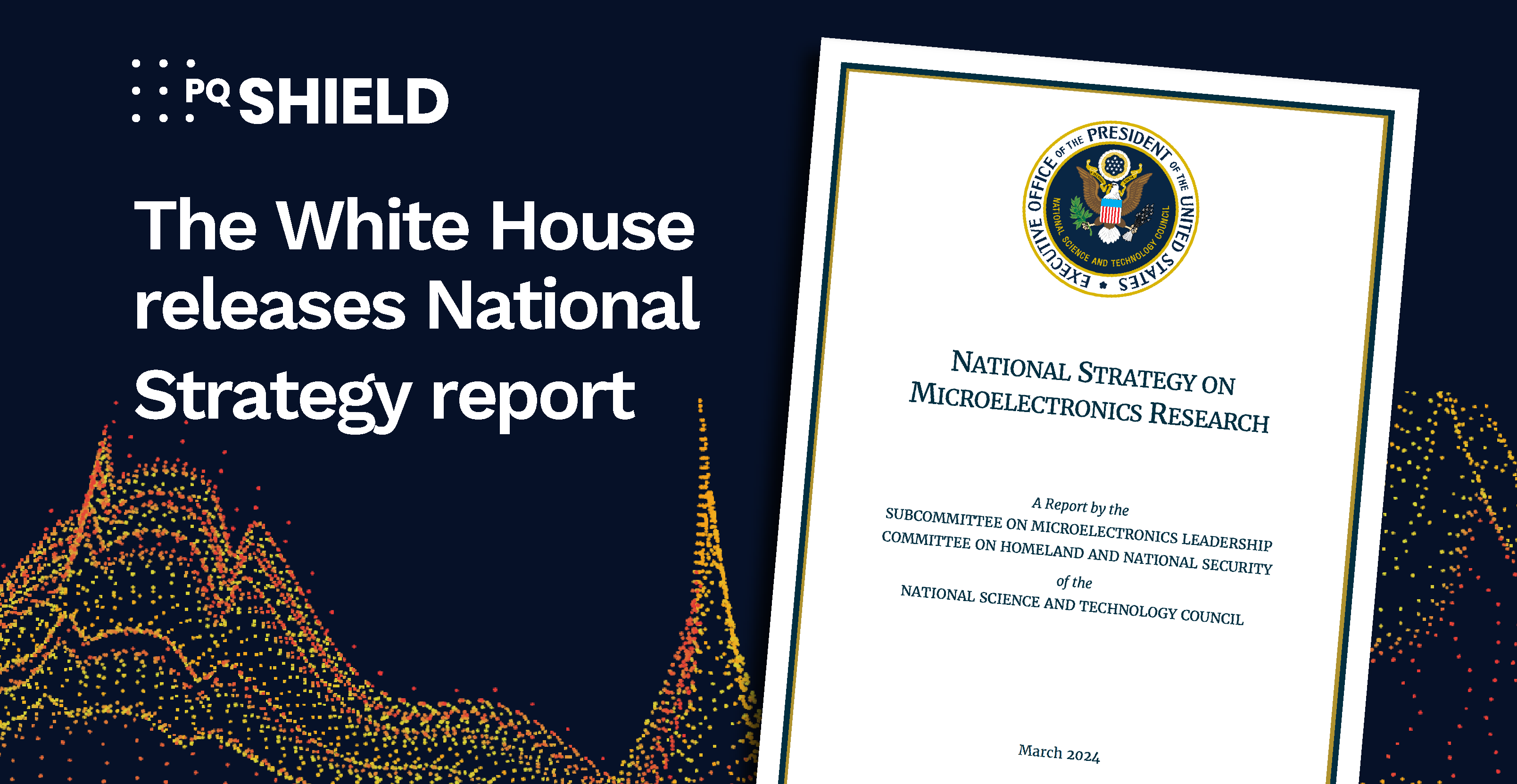In today’s rapidly evolving technological landscape, it’s easy to forget that the modern world runs on platforms built on microelectronics. Almost every aspect of life, from the use of handheld devices to global networks, from communications to healthcare, relies on the incredible semiconductor technology of miniaturized electrical circuits. These tiny chips are the building blocks of the global supply chain.
In March, the White House Office of Science and Technology Policy (OSTP) released a new strategy aimed at strengthening the US ecosystem for research and development and manufacturing of microelectronics, over the next five years. The goal of the strategy is to create innovation, to bridge the gap between R&D and industry, to enable further research for the challenges ahead, and to grow the technical workforce in the microelectronics space.
Naturally, quantum security for devices is a critical factor in this area, and there are enormous implications for microelectronics. Hardware manufactured today, say in the automotive sector, or in large industrial machinery, could easily still be in use in ten or twenty years’ time, long after the first cryptographically relevant computer is developed. Additionally, with the threat of ‘harvest-now-decrypt-later’, any vulnerability in today’s technology could easily be exploited to store digital information for decryption when quantum techniques are sufficiently sophisticated.
There’s no doubt that the manufacturing decisions made today have a critical impact on the world of tomorrow.
That’s why it’s encouraging to see that part of this strategy is focused on post-quantum defences included in microelectronic system design.
“In the face of threats from nation-state and criminal adversaries, the potential for the insertion of malicious alterations into components ranging from circuits to software, combined with the need to prepare for encryption and data security in a post-quantum-computing world, make it essential that integrity and cybersecurity be a foundational component of system design. There are many attack vectors that must be mitigated, including side-channel, reverse-engineering, malicious hardware, and supply-chain manipulation.”
At PQShield, we’re focused on these foundational components of chip design, and we specialize in mitigating side-channel attacks. In fact, our hardware IP is specifically designed to defend against cryptographic and physical side-channel quantum attack, and we’ve built our products to be highly configurable – whether for high performance and high throughput, or maximized for high security in memory-constrained platforms.
Hardware integrity and security are key parts of this microelectronics strategy, and are important focal points for the US. It’s also a good reinforcement of PQShield’s vision to stay one step ahead of the attackers – by protecting the foundation of the supply chain at a semiconductor level. Our goal is to modernize that supply chain, and this is a key opportunity for alignment, and a message that should resonate, both within the United States and further afield – the time to prepare for the quantum threat is now, and the security of all of our digital information, our hardware and our microchip-driven devices is at stake.

